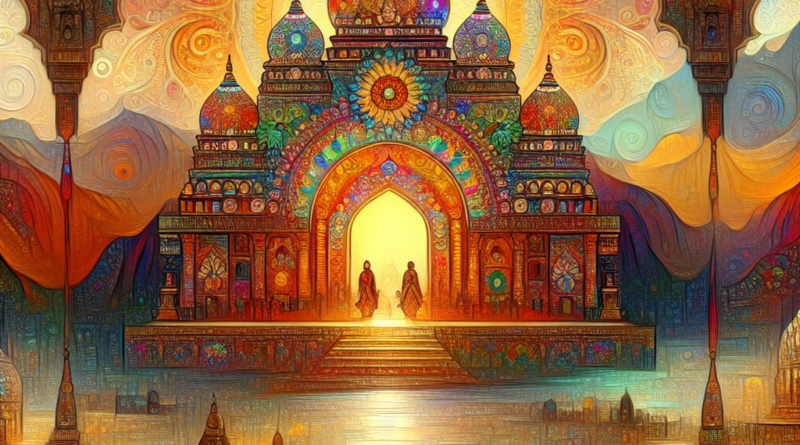Sacred Hideaways: Unveiling Hindu’s Mysterious Sanctuaries
Title: Unveiling the Mysteries: Hindu Secret Places and their Rajput Cultural Significance
Introduction:
India, with its rich tapestry of history and culture, is home to numerous secret places imbued with deep spiritual significance for Hindus and Rajputs alike. These hidden gems hold within their ancient walls stories of devotion, valor, and mysticism that have shaped the cultural landscape of the region. In this article, we will explore some of the most intriguing Hindu secret places and delve into their historical context and contemporary relevance in the modern world.
Historical Context:
The history of Hindu secret places is intertwined with the ancient traditions and beliefs of the religion. These places, often tucked away in remote corners of the country, served as sanctuaries for sages, ascetics, and spiritual seekers seeking solitude and enlightenment. The Rajputs, renowned for their valor and chivalry, also held these secret places in high regard, often using them as places of meditation and reflection before embarking on battles or important decisions.
One such secret place with deep historical roots is the Karni Mata Temple in Rajasthan. This temple, also known as the Temple of Rats, is dedicated to Karni Mata, a revered Hindu sage believed to be an incarnation of Goddess Durga. The temple is home to thousands of rats, which are considered sacred and are believed to be the reincarnations of Karni Mata and her family members. Devotees flock to the temple to seek blessings and offer prayers, believing that the rats bring good fortune and prosperity.
Contemporary Relevance:
In today’s fast-paced world, these Hindu secret places continue to hold significance for both locals and tourists seeking spiritual solace and cultural immersion. The Karni Mata Temple, for example, attracts thousands of visitors each year, drawn by the unique religious practices and mystical aura of the place. The temple serves as a reminder of the enduring faith and devotion of the people, transcending time and space.
Another notable secret place is the Kal Bhairav Temple in Ujjain, Madhya Pradesh. Dedicated to Lord Kal Bhairav, a fierce form of Lord Shiva, this temple is known for its association with the Bhairav cult, which emphasizes the worship of the deity for protection and strength. The temple is frequented by devotees seeking blessings for success, courage, and overcoming obstacles in life.
The Rajputs, known for their deep-rooted traditions and customs, continue to honor and preserve these secret places as a testament to their cultural heritage. The Chittorgarh Fort in Rajasthan, for instance, stands as a symbol of Rajput valor and sacrifice, with its towering walls and imposing structures bearing witness to the battles fought and won by the brave Rajput warriors. The fort remains a source of inspiration for the Rajput community, reminding them of their glorious past and the need to uphold their traditions in the present day.
Conclusion:
In conclusion, Hindu secret places hold a special place in the hearts of devotees and culture enthusiasts alike, offering a glimpse into the spiritual and cultural heritage of India. These hidden gems, with their mystical charm and historical significance, continue to inspire awe and reverence in the modern world, bridging the gap between the past and the present. As we unravel the mysteries of these secret places, we uncover the enduring legacy of Hindu and Rajput culture, a legacy that continues to thrive and flourish in the ever-evolving landscape of India.

